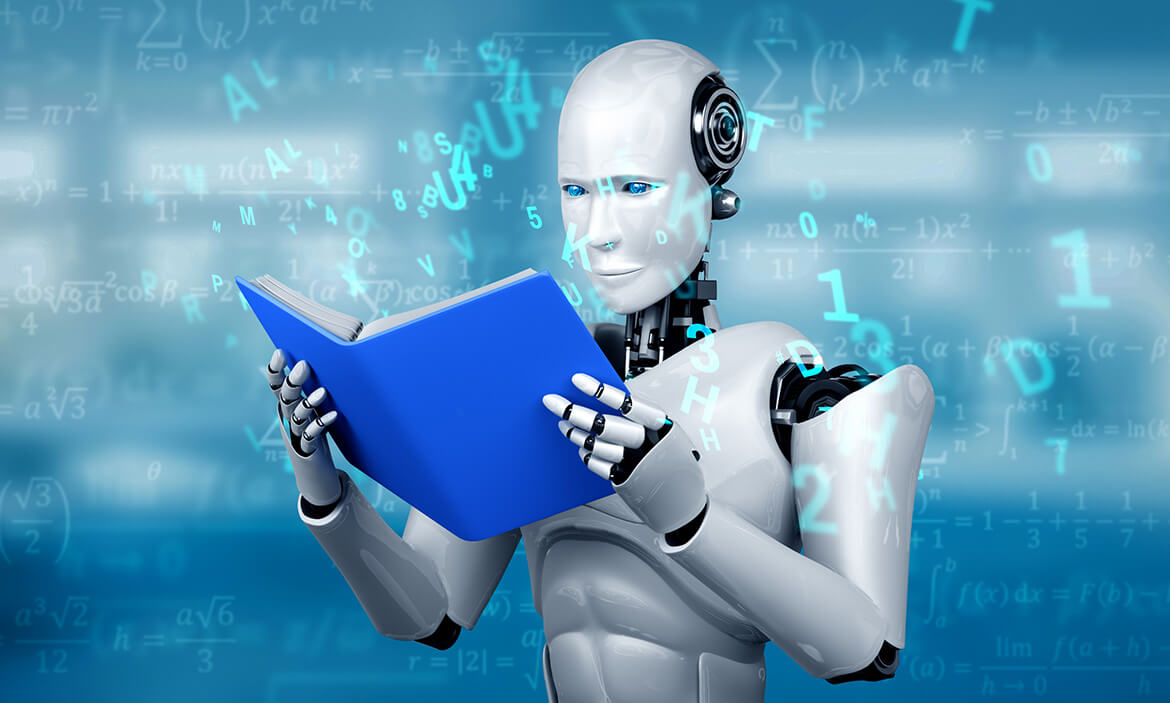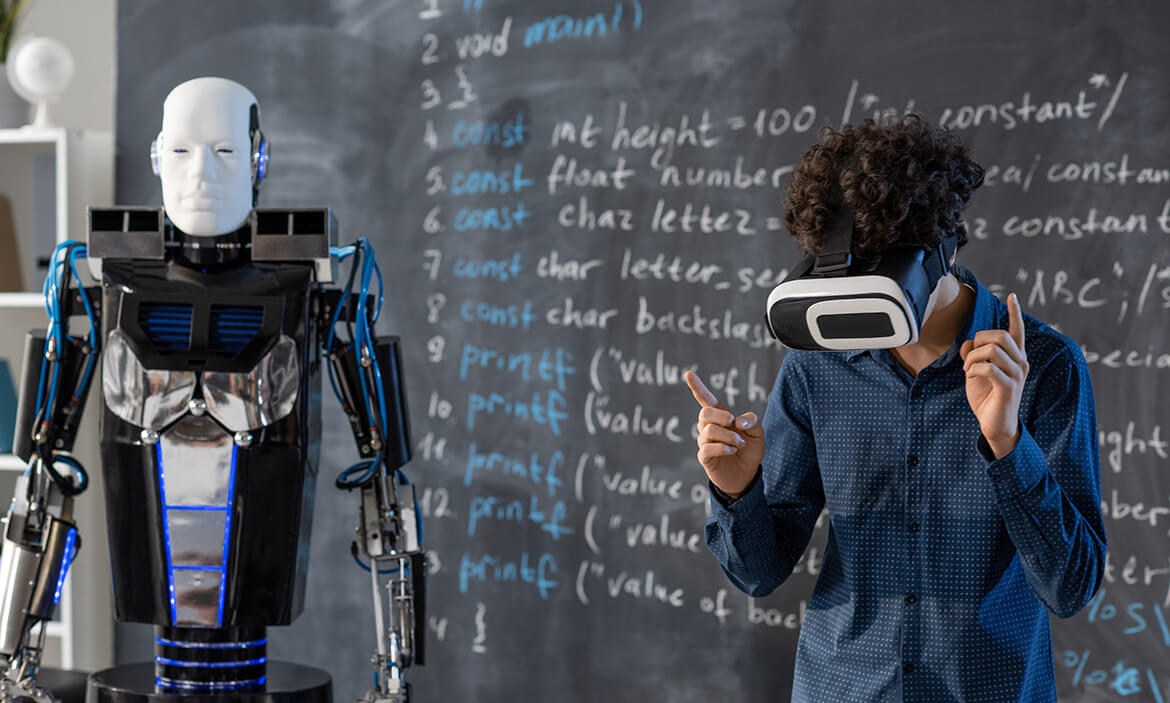AI-Powered Translation for Life Sciences
— Faster. Smarter. Compliance-Driven.
- Hybrid Translation Approach – AI-enhanced, human-refined.
- Optimized for Life Sciences – Trained on validated industry data.
- Regulatory Precision – FDA, EMA, PMDA, and ISO-compliant.
AI in Language Services
The integration of artificial intelligence (AI) in translation and localization has transformed the way global organizations manage multilingual communication. AI-powered translation enhances efficiency, scalability, and consistency, particularly in the highly regulated life sciences sector, where accuracy is paramount.
The Evolution of AI in Translation & Localization
AI-driven language technologies have advanced from rule-based and statistical machine translation (SMT) to neural machine translation (NMT) and custom-trained large language models (LLMs). These innovations enable more context-aware, fluent, and precise translations, particularly for complex, domain-specific content.
AI as an Enhancement, Not a Replacement
AI accelerates the translation process but does not replace human expertise. In life sciences translation, linguistic precision, regulatory compliance, and contextual understanding require expert human oversight. Sesen’s Hybrid Translation approach integrates AI with professional linguists to maintain quality, accuracy, and adherence to industry standards.
The Critical Role of Precision, Compliance & Context
Life sciences content—regulatory submissions, clinical trial documentation, patient materials, and medical device labeling—requires exact terminology, consistency, and compliance with global regulatory bodies such as the FDA, EMA, and PMDA. AI-powered translation ensures efficiency, but human validation remains essential to mitigate risks and uphold quality.
Sesen’s AI-Powered Translation Solutions
Sesen combines proprietary SesenGPT with human linguistic expertise to deliver AI-enhanced, compliance-driven translations for pharmaceutical, biotech, and medical device companies. Our custom-trained AI models, adaptive translation memory, and terminology management systems provide a streamlined, high-accuracy workflow tailored to life sciences.
↗ AI-driven efficiency. Human-led precision. Industry-compliant solutions.
What is AI-Powered Translation?
AI-powered translation, also known as Hybrid Translation, is a workflow where AI-driven technology, including SesenGPT, enhances human translation by improving speed, consistency, and accuracy while maintaining regulatory compliance. This approach ensures that life sciences content—such as clinical trial documentation, regulatory filings, and medical device labeling—meets the highest quality standards without compromising precision.
Sesen’s AI-enhanced translation solution integrates advanced linguistic technologies to support expert human translators:
Predictive Text Suggestions
AI anticipates and suggests contextually relevant translations to improve efficiency and reduce errors.
Adaptive Translation Memories
AI dynamically refines and applies previously approved translations for improved consistency across regulatory and scientific content.
AI-Assisted Terminology Enforcement
Ensures strict adherence to medical, pharmaceutical, and regulatory terminology across documents.
Context-Aware AI for Life Sciences Content
Domain-trained AI models optimize translations based on life sciences-specific datasets, ensuring alignment with industry standards and regulatory requirements.
By combining AI efficiency with human oversight, Sesen delivers highly accurate, compliant, and scalable translations tailored for the pharmaceutical, biotech, and medical device sectors.
Key Characteristics of AI-Powered Translation
Sesen’s AI-powered translation combines advanced machine learning, linguistic expertise, and regulatory compliance to deliver precise, efficient, and industry-specific translations for life sciences.
Human-Led with AI Assistance
Sesen’s Hybrid Translation model ensures AI enhances, rather than replaces, human expertise.
- AI generates context-aware translation suggestions, but human linguists make all final decisions.
- Human oversight guarantees compliance with life sciences regulations and preserves scientific and regulatory accuracy.
- Translators validate AI outputs to prevent critical errors in clinical, regulatory, and technical documentation.
Custom-Trained AI Models
SesenGPT is an industry-specific AI, built for the precision demands of life sciences translation.
- Trained on validated life sciences corpora, including clinical research, pharmacovigilance reports, and regulatory filings.
- Optimized for regulatory language and compliance-sensitive terminology, ensuring adherence to global standards.
- Continuously updated to reflect new drug approvals, evolving regulations, and emerging medical innovations.
Interactive & Adaptive Translation Technology
Sesen’s AI model is designed for real-time learning and client-specific adaptation.
- AI dynamically refines outputs based on translator feedback, improving with each iteration.
- Custom glossaries and terminology management enforce consistency across medical and regulatory documentation.
- Client-specific AI training ensures precision in pharmaceutical, biotech, and medical device translations.
Higher Accuracy Than Generic Machine Translation
Unlike general-purpose machine translation engines, Sesen’s AI is built for life sciences complexity.
- Trained on domain-specific bilingual corpora, including regulatory submissions, clinical trial protocols, and medical research.
- Ensures accuracy in scientific terminology, medical abbreviations, and compliance language.
- Outperforms generic AI models by preserving the nuances of highly technical and regulated content.
Regulatory Compliance & AI in Translation
AI-powered translation must align with global regulatory frameworks to ensure content integrity.
- AI supports compliance consistency, but human linguists validate adherence to:
- FDA (U.S. Food and Drug Administration)
- EMA (European Medicines Agency)
- PMDA (Japan Pharmaceuticals and Medical Devices Agency)
- ICH, ISO 17100, ISO 13485, MDR, IVDR, and other life sciences industry standards.
Sesen’s AI-powered translation ensures efficiency, accuracy, and compliance—delivering faster, high-quality multilingual content for regulated industries.
Use Cases: Where AI-Powered Translation Excels
Sesen’s AI-powered translation solutions are designed to enhance efficiency, accuracy, and compliance across the life sciences industry, ensuring seamless multilingual communication for pharmaceutical, biotech, and medical device companies.
Regulatory & Compliance Translations
AI-powered translation accelerates the localization of regulatory documentation while ensuring compliance with international standards.
- Clinical trial submissions – Protocols, informed consent forms (ICFs), and investigator brochures.
- Regulatory dossiers – Common Technical Document (CTD), New Drug Applications (NDA), and Marketing Authorization Applications (MAA).
- Pharmacovigilance & drug safety reports – Periodic Safety Update Reports (PSURs), Risk Management Plans (RMPs), and adverse event reports.
Scientific & Technical Documentation
AI-driven translation improves accuracy and consistency in scientific publications and research materials.
- Clinical study reports (CSRs) and medical research papers – Ensuring precision in complex scientific terminology.
- Standard operating procedures (SOPs) and training manuals – AI-assisted consistency across multilingual versions.
- Healthcare and medical literature – Ensuring clarity and accuracy for global scientific communities.
Pharmaceutical & Biotech Translations
SesenGPT enhances pharmaceutical documentation by maintaining terminology accuracy, consistency, and compliance.
- Drug labeling and prescribing information – Ensuring regulatory adherence across global markets.
- Patient information leaflets (PILs) and packaging inserts – AI-enforced terminology consistency for patient safety.
- Manufacturing & quality control documents – Supporting multilingual GMP and regulatory compliance.
Medical Device & Software Localization
AI-powered translation ensures accuracy and regulatory alignment in medical device documentation and digital health applications.
- Instructions for Use (IFUs) and user manuals – Compliant with MDR (Medical Device Regulation) and IVDR (In Vitro Diagnostic Regulation).
- eHealth & medical software localization – AI-enhanced adaptation of UI/UX, electronic health records (EHRs), and telemedicine platforms.
- Multilingual regulatory submissions for medical devices – Consistent terminology enforcement across technical documents.
High-Volume, High-Quality Translations with Fast Turnaround
AI-powered translation optimizes efficiency for life sciences organizations managing large-scale, multilingual projects.
- Rapid updates to multilingual regulatory and technical content without compromising quality.
- AI-assisted post-editing workflows streamline delivery while maintaining human oversight.
- Scalable solutions for global pharmaceutical, biotech, and healthcare enterprises.
Sesen’s AI-powered translation delivers speed, precision, and regulatory compliance, ensuring seamless global communication for life sciences companies.
How Sesen Delivers AI-Powered Translation
Sesen combines advanced AI technology, regulatory expertise, and human linguistic oversight to provide highly accurate, compliant, and scalable translation solutions for life sciences. Our approach ensures that pharmaceutical, biotech, and medical device companies receive fast, secure, and regulatory-aligned multilingual content.
Custom AI Workflows for Life Sciences
Sesen’s AI-powered translation integrates machine learning with human review to deliver precision, consistency, and compliance across regulated content.
- AI-driven translation workflows are customized for life sciences, ensuring adherence to regulatory and linguistic requirements.
- Machine Translation Post-Editing (MTPE) strategies are tailored to content type, risk level, and regulatory sensitivity, ensuring human linguists validate AI-generated content.
- Regulatory validation checkpoints guarantee that translations meet FDA, EMA, PMDA, and ISO 17100 compliance standards.
Advanced Terminology Management
Terminology precision is critical in life sciences translation, where errors can have regulatory and patient safety implications.
- AI-enforced terminology management ensures adherence to medical, pharmaceutical, and regulatory lexicons.
- Client-specific glossaries and linguistic assets provide consistent translations tailored to brand, product, and compliance requirements.
- Dynamic terminology updates incorporate new drug approvals, emerging scientific discoveries, and evolving regulatory guidelines, ensuring content remains accurate and up to date.
Data Security & Confidentiality
Sesen prioritizes data privacy, regulatory compliance, and security to protect sensitive life sciences information.
- HIPAA-compliant, ISO-certified processing environments ensure secure handling of clinical, medical, and patient-related content.
- End-to-end data encryption safeguards confidential patient records, proprietary research, and regulatory documents.
- Secure cloud hosting on AWS leverages industry-leading security frameworks, ensuring AI-powered translation operates in a protected and compliant infrastructure.
Sesen’s AI-powered translation services optimize efficiency, maintain compliance, and ensure accuracy, delivering scalable, high-quality multilingual solutions for regulated industries worldwide.
The Future of AI in Life Sciences Translation
AI is transforming life sciences translation by enabling real-time multilingual communication, improving accuracy, and enhancing regulatory compliance. As AI technology evolves, Sesen remains at the forefront of innovation, ensuring that AI-powered translation solutions continue to meet the stringent demands of pharmaceutical, biotech, and medical device industries.
AI’s Growing Role in Real-Time Multilingual Medical Communication
- AI-driven real-time translation facilitates instant, multilingual communication in clinical trials, global regulatory interactions, and telemedicine applications.
- Advanced speech-to-text and neural translation models improve real-time localization for medical conferences, research collaborations, and patient engagement.
- AI enhances pharmacovigilance monitoring by automatically detecting and translating adverse event reports across global regulatory networks.
Balancing AI Automation with Human Linguistic Expertise
- AI increases efficiency, but human oversight remains critical to ensure contextual accuracy, medical integrity, and compliance.
- Hybrid translation workflows leverage AI for speed and consistency, while expert linguists handle terminology nuances, cultural adaptation, and regulatory precision.
- AI supports human translators with predictive text suggestions, automated quality assurance checks, and adaptive learning from linguistic feedback.
Advancements in Context-Awareness, Terminology Precision & Regulatory Compliance
- AI models are becoming more context-aware, improving their ability to differentiate between medical, regulatory, and scientific language variations.
- Custom-trained AI like SesenGPT enhances terminology precision, ensuring alignment with industry-specific lexicons, drug databases, and clinical terminologies.
- AI-assisted translation is evolving to meet increasingly complex regulatory frameworks, ensuring compliance with FDA, EMA, PMDA, and ISO 17100 standards through automated validation tools.
Multimodal AI for Clinical Trial & Patient Communications
- AI-powered speech-to-text and real-time video localization for global clinical trial participants, telemedicine, and patient engagement.
- Neural translation models that interpret multimodal data (text, voice, images) to enhance clinical trial documentation accuracy.
- Personalized AI-driven translations that adapt tone and readability for different patient demographics and medical literacy levels.
AI-Powered Translation for Drug Safety & Pharmacovigilance
- AI-enhanced global adverse event (AE) reporting, translating safety data in real time while maintaining compliance with MedDRA coding standards.
- Machine learning models trained on real-world safety data to improve drug labeling translations and detect cross-linguistic inconsistencies.
- AI-assisted pharmacovigilance intelligence, scanning multilingual sources to identify potential drug safety signals faster.
AI-Powered Localization of Life Sciences Software & Digital Health Tools
- AI-driven eHealth localization for medical apps, wearable device interfaces, and electronic health records (EHRs).
- Automated adaptation of UI/UX elements while ensuring regulatory compliance in different markets.
- AI-integrated voice assistants that provide multilingual patient instructions, drug interaction warnings, and symptom assessments.
Blockchain-Backed AI Translation for Data Security & Compliance
- Blockchain-powered translation tracking to verify AI-assisted translations, maintain audit trails, and ensure data integrity.
- AI-generated smart contracts for language compliance auditing, ensuring translations align with regulatory guidelines before submission.
- Decentralized AI translation networks to secure patient data and proprietary pharmaceutical research from unauthorized access.
Ready to Elevate Your Life Sciences Translations?
Leverage AI-powered efficiency with human-led precision for faster, compliant, and high-quality multilingual content.






